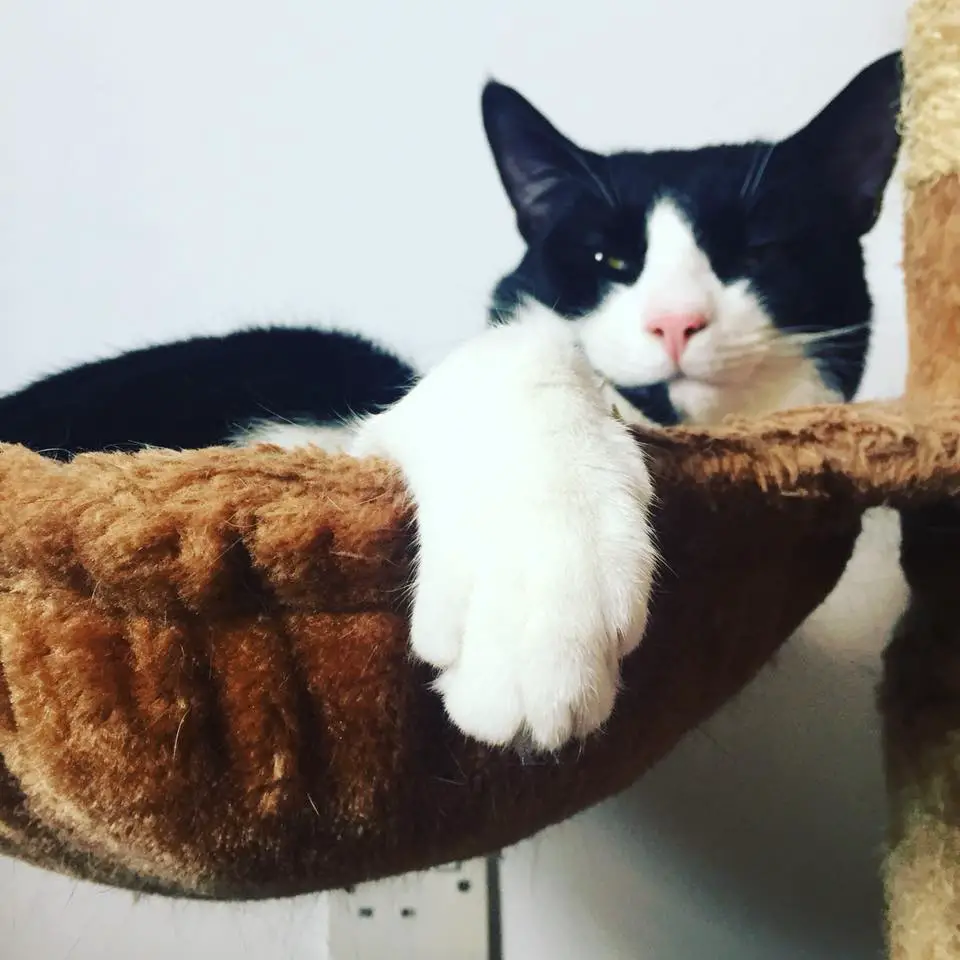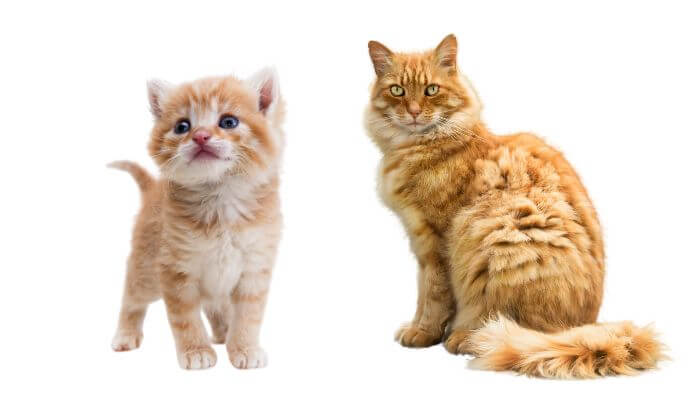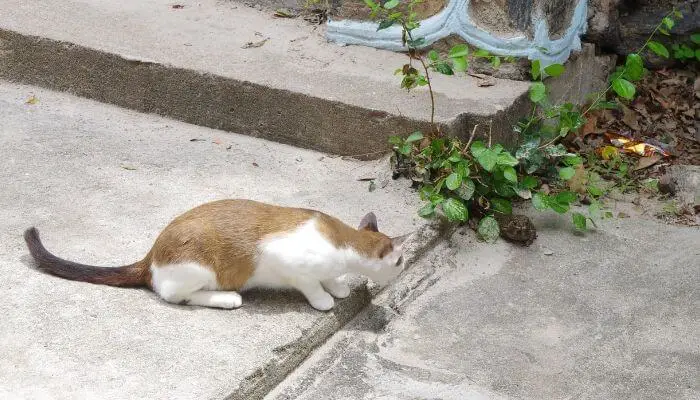When we hear a word like diabetes associated with our beloved pets, it’s hard not to panic. Especially when it might affect their quality of life, or worse, the amount of time we have with them.
For most cats, though, feline diabetes can be a totally treatable condition, although some treatment plans can be quite complex and you may need to spend some time finding the correct treatment that works for your cat.
First things first, familiarising yourself with feline diabetes is one of the best ways to help your kitty, as a deep understanding of the condition will put you in the best position to control it and keep your cat feeling at their best.
Contents
What is Feline Diabetes?

Like diabetes in humans, there are two types of diabetes associated with cats. Both types are caused by either the body having too much or too little of a hormone called insulin, which is used to regulate glucose (sugar) levels in blood.
Insulin is produced in an organ called the pancreas, and is produced in direct response to the levels of sugar in your cat’s blood. For instance, if the glucose levels are high (such as after eating), the pancreas will produce more insulin. This insulin will allow glucose to be taken up by cells in the body and be converted into energy. The levels of glucose in the blood will then return to normal.
If your cat is suffering from diabetes, it means that either their pancreas is not producing enough insulin, or their body has an inadequate response to insulin in the body – i.e. insulin resistance. Either way, the body will not be able to absorb the glucose it needs, so it will turn to other sources of energy in the body such as breaking down stored fats. This can also lead to dangerously high (hyperglycaemia) levels of glucose in the blood.
Type I diabetes in cats means that glucose concentrations become high due to the pancreas not producing enough insulin, this is caused by an auto-immune response to destroy insulin-producing cells. In Type II diabetes, the glucose levels become high because the cells in the body are not responding as they should to insulin.
Unlike dogs, cats are far more prone to suffering from Type II diabetes, with Type I being very rare in felines.
What Causes Feline Diabetes?
Type II diabetes in cats is very similar to humans, and in many cases, can be prevented with lifestyle factors. If your cat is overweight, has little or no exercise and/or eats a high carbohydrate/low protein diet, then they are far more susceptible to developing Type II diabetes.
If you can get an early diagnosis of this type of diabetes, then your cat will still be producing enough insulin in the body, it’s just that your cat’s cells are becoming insulin resistant. If certain lifestyle changes are put into effect, then your cat might go into remission for a few years. If not caught quickly, though, your cat will likely need life-long treatment.
The insulin resistance seen in Type II diabetes might simply be genetic, though, so lifestyle might have nothing to do with your cat developing diabetes. It is most common in middle-aged and older cats and there’s also evidence to suggest that male cats and some breeds such as Burmese are more likely to develop diabetes.
Diabetes can also occur in cats as a secondary disease or as a side effect due to certain medicines. Illnesses such as pancreatitis – inflammation of the pancreases – can destroy so much of the organ tissue that insulin production is no longer viable. Cushing’s disease, although rare, is often associated with diabetes too.
Use of glucocorticoid medicines – such as prednisone and prednisolone – for diseases such as asthma, allergies and inflammatory bowel disease can increase the risk for diabetes when used in high doses over long periods of time. If these medications are weaned away, treatment with insulin and a different diet will usually see the diabetes go into remission.
The Symptoms of Feline Diabetes
There are many signs and symptoms of your cat suffering from diabetes, here are some of the most common:
- Increased Urination and Thirst
Due to the increased levels of glucose in the blood, your cat’s kidneys will work extra hard to dispel this extra glucose, meaning your cat will be using the litter tray more. As this excess glucose carries water with it, your cat will lose more water during urination than they normally would. Your cat will try to fix this by drinking more than normal.
If you see your cat using the litter tray more often or going outside more, matched with their water fountain (or bowl) needing to be filled more often, then it could be a sign of diabetes. Also keep an eye out for your cat trying to drink from unusual places, such as a leaky tap or toilet. If this is unusual behaviour for them then take them to the vet.
- Changes in Eating Habits
When a cat loses their appetite, it is the first warning bell that something is not right. This can happen from diabetes or a host of other problems, so if your cat’s eating has slowed or stopped then a trip to the vets for tests is a must.Conversely, diabetes can also cause a cat to eat a lot more than usual. This, especially when matched with weight loss, can be a sign of diabetes.
- Weight Loss
As diabetes stops the body using the food they eat as energy, it will instead turn to fat stores in the body for energy. This means that if your cat has started to lose weight quite dramatically then diabetes may be the cause.
You should also look out for your cat being more lethargic than normal, as a lack of energy could be the result of diabetes. A cat that doesn’t want to play, sleeps more and hides are all signs that something is not quite right.
Keep in mind, though, that the severity of these symptoms will vary from cat to cat and may not even show up at all. As owners, we generally know when our cats aren’t acting their usual self, so if you think something is up then take them to the vets. Even if it’s just for your own peace of mind.
Other less common symptoms of diabetes include:
• Poor coat
• Liver enlargement
• Leg weakness
• Bladder infections
Diagnosing Diabetes in Cats

As many of the symptoms of diabetes are shared with other diseases and conditions, your vet is likely to conduct a generalised blood test to look for various blood markers.
In the case of diabetes, a high concentration of glucose will be found in the blood (known as hyperglycaemia) and a further urine test can be taken to look for glucose and ketones in the urine.
Stress can cause cats to have both extra glucose in the urine and blood, so for a confirmed diabetes diagnosis, your vet may ask you to return in a few weeks to repeat the tests.
If your cat does have urinary issues feeding them cat food specifically designed for urinary health can help – however you must consult your vet if you notice any of the above symptoms, a simple diet change won’t be sufficient.
How to Treat Feline Diabetes
Treating diabetes in cats is by no means simple, and will require effort from the owners and regular visits to the vet to ensure that any treatment is working. This can be an expensive process, however if you have insurance for your cat this will help with the costs. Make sure that any insurance you have is lifetime cover, this is an essential insurance option for older cats with long term illnesses or diseases, without lifetime insurance your insurer might refuse to pay for your cat’s ongoing diabetes care for more than a one year period.
Most cats with diabetes will need to have insulin injected into them at least once or twice a day. These injections will usually be 12 hours apart and be given after a meal. Your vet will teach you how to give them injections properly and painlessly for your kitty, normally into the scuff of the neck. This can be scary for owners, but this is the best way to keep your cat feeling well and it will come second nature to you after a short while.
Insulin injections are most effective with planning, so get yourself into a routine for every day to give the insulin at similar times, make sure you have the right dose and always ensure that any insulin is stored correctly in the fridge at all times. If two of you are in charge of the cat’s medicine, make a tick box sheet, so that nobody is left confused over whether your cat has had their insulin or not.
You may also need to test your cat’s blood glucose levels by taking a small swab of blood from time to time.
As well as injecting insulin, the symptoms of diabetes can be kept under control using diet and weight management. If your cat is overweight, a meal plan and exercise can really reduce the severity of their diabetes – it may even go into remission in some cases. Your vet can work with you to create a weight management plan for your cat. Plus, keeping your cat in top shape can help prevent other diseases and conditions too.
Research has found that diabetic cats benefit most from a low carbohydrate diet, so changing their diet is definitely worth trying. Most vets can provide you with a specially formulated food on prescription, however, for a more cost-effective method, many pet stores and websites are now stocking raw cat food that is low in carbohydrates and high in protein.
If you do change their diet, be sure to tell any friends or neighbours who like to feed your cat too, as they might undo all your hard work with too many high carbohydrate treats!
As an Amazon Associate I may earn a small fee from qualifying purchases at no extra cost to you. This helps us run the site, so thanks for your support!








Leave a Comment